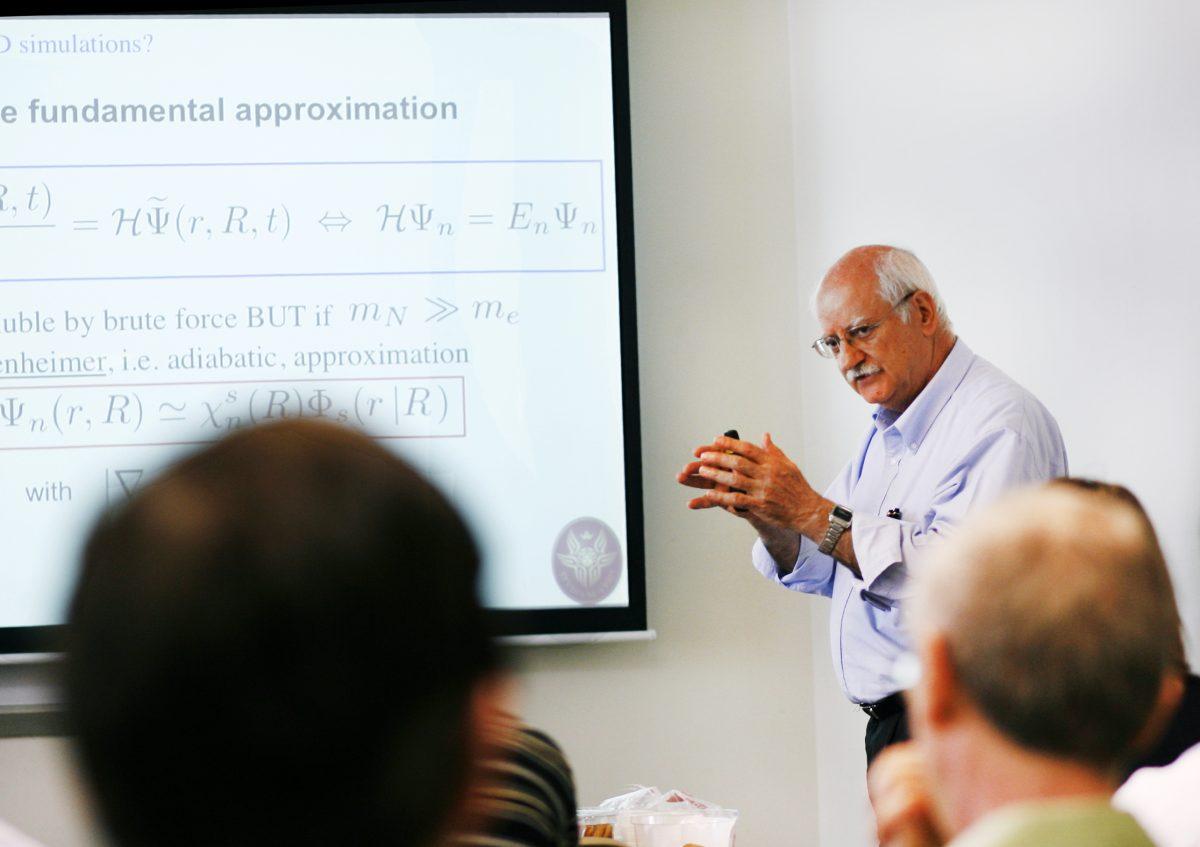Italian physicist and professor of Structure of Matter at the University of Rome, Giovanni Ciccotti, traveled to N.C. State’s campus to give a lecture about the complexities and challenges of molecular dynamics simulations Wednesday.
Molecular dynamics is a contemporary study and its origins date back to the late 1950’s when theoretical physicists devised methods of modeling complex interactions between atoms and molecules.
The applications of such models at that time did not look promising, but modern technology has created more opportunities for the field.
“[It] was hard in the past to create a model which could be using the technologies they had in the 1970s,” Cicotti said.
He illustrated this point by telling a story in which a colleague of his made a model for a weather system which could predict the weather in an hour based on given conditions. The only catch was that it would take the computer about two weeks to do the computations, rendering the model useless.
However, due to Moore’s Law, which states the power of computer circuits doubles every two years, computers now have the ability to do much more complex computations at a faster and more economically feasible fashion.
This computational ability has given physicists, such as Ciccotti, the capability to develop models which are used in fields such as material science engineering and plasma physics.
Molecular dynamics models are also useful in modeling biological systems and the behavior of biomolecules.
The event featured in depth discussion about the esoteric inner workings of molecular dynamics which are incomprehensible to the laymen.
Nevertheless, it is not difficult to see how a theory of such encompassing scope can be applied in the scientific and engineering discoveries and inventions of the future.








